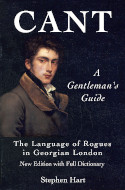LAMBETH AND VAUXHALL TAVERNS AND GARDENS ETC
On the south bank of the Thames, at the time of the Restoration, were first laid out the New Spring Gardens, at Lambeth (Vauxhall), so called to distinguish them from Spring Garden, Charing Cross. Nearly two centuries of gay existence had Vauxhall Gardens, notwithstanding the proverbial fickleness of our climate, and its ill-adaptation for out-door amusements. The incidents of its history are better known than those of Marylebone or Ranelagh Gardens; so that we shall not here repeat the Vauxhall programmes. The gardens were finally closed in 1859, and the ground is now built upon: a church, of most beautiful design, and a school of art, being the principal edifices.
"Though Vauxhall Gardens retained their plan to the last, the lamps had long fallen off in their golden fires; the punch got weaker, the admission-money less; and the company fell in a like ratio of respectability, and grew dingy, not to say raffish,—a sorry falling-off from the Vauxhall crowd of a century since, when it numbered princes and ambassadors; 'on its tide and torrent of fashion floated all the beauty of the time; and through its lighted avenues of trees glided cabinet ministers and their daughters, royal dukes and their wives, and all the red-heeled macaronies.' Even fifty years ago, the evening costume of the company was elegant: head-dresses of flowers and feathers were seen in the promenade, and the entire place sparkled as did no other place of public amusement. But low prices brought low company. The conventional wax-lights got fewer; the punch gave way to fiery brandy or doctored stout. The semblance of Vauxhall was still preserved in the orchestra printed upon the plates and mugs; and the old fire-work bell tinkled as gaily as ever. But matters grew more seedy; the place seemed literally worn out; the very trees were scrubby and singed; and it was high time to say, as well as see, in letters of lamps, 'Farewell for ever!'"[52]
Several other taverns and gardens have existed at different times in this neighbourhood. Cumberland Gardens' site is now Vauxhall Bridge-road, and Cuper's Garden was laid out with walks and arbours by Boydell Cuper, gardener to Thomas, Earl of Arundel, who gave him some of the mutilated Arundelian marbles (statues), which Cuper set up in his ground: it was suppressed in 1753: the site is now crossed by Waterloo Bridge Road. Belvidere House and Gardens adjoined Cuper's Garden, in Queen Anne's reign.
The Hercules Inn and Gardens occupied the site of the Asylum for Female Orphans, opened in 1758; and opposite were the Apollo Gardens and the Temple of Flora, Mount-row, opened 1788. A century earlier there existed, in King William's reign, Lambeth Wells, in Three Coney Walk, now Lambeth Walk; it was reputed for its mineral waters, sold at a penny a quart, "the same price paid by St. Thomas's Hospital." About 1750 a Musical Society was held here, and lectures and experiments were given on natural philosophy by Erasmus King, who had been coachman to Dr. Desaguliers. In Stangate-lane, Carlisle-street, is the Bower Saloon, with its theatre and music-room, a pleasure-haunt of our own time. Next is Canterbury Hall, the first established of the great Music Halls of the metropolis.
The Dog and Duck was a place of entertainment in St. George's Fields, where duck-hunting was one of its brutal amusements. The house was taken down upon the rebuilding of Bethlehem Hospital; and the sign-stone, representing a dog squatting upon his haunches, with a duck in his mouth, with the date 1617, is imbedded in the brick wall of the Hospital garden, upon the site of the entrance to the old tavern; and at the Hospital is a drawing of the Dog and Duck: it was a resort of Hannah More's "Cheapside Apprentice."
Bermondsey Spa, a chalybeate spring, discovered about 1770, was opened, in 1780, as a minor Vauxhall, with fireworks, pictures of still life, and a picture-model of the Siege of Gibraltar, painted by Keyse, the entire apparatus occupying about four acres. He died in 1800, and the garden was shut up about 1805. There are Tokens of the place extant, and the Spa-road is named from it.
A few of the old Southwark taverns have been described. From its being the seat of our early Theatres, the houses of entertainment were here very numerous, in addition to the old historic Inns, which are fast disappearing. In the Beaufoy collection are several Southwark Tavern Tokens; as—The Bore's Head, 1649 (between Nos. 25 and 26 High-street). Next also is a Dogg and Dvcke token, 1651 (St. George's Fields); the Greene Man, 1651 (which remains in Blackman-street); ye Bull Head Taverne, 1667, mentioned by Edward Alleyn, founder of Dulwich College, as one of his resorts; Duke of Suffolk's Head, 1669; and the Swan with Two Necks.
[52] See the Descriptions of Vauxhall Gardens in Curiosities of London, pp. 745-748. Walks and Talks about London, pp. 16-30. Romance of London, vol. iii. pp. 34-44.
John Timbs
Club Life of London Vol. II
London, 1866

